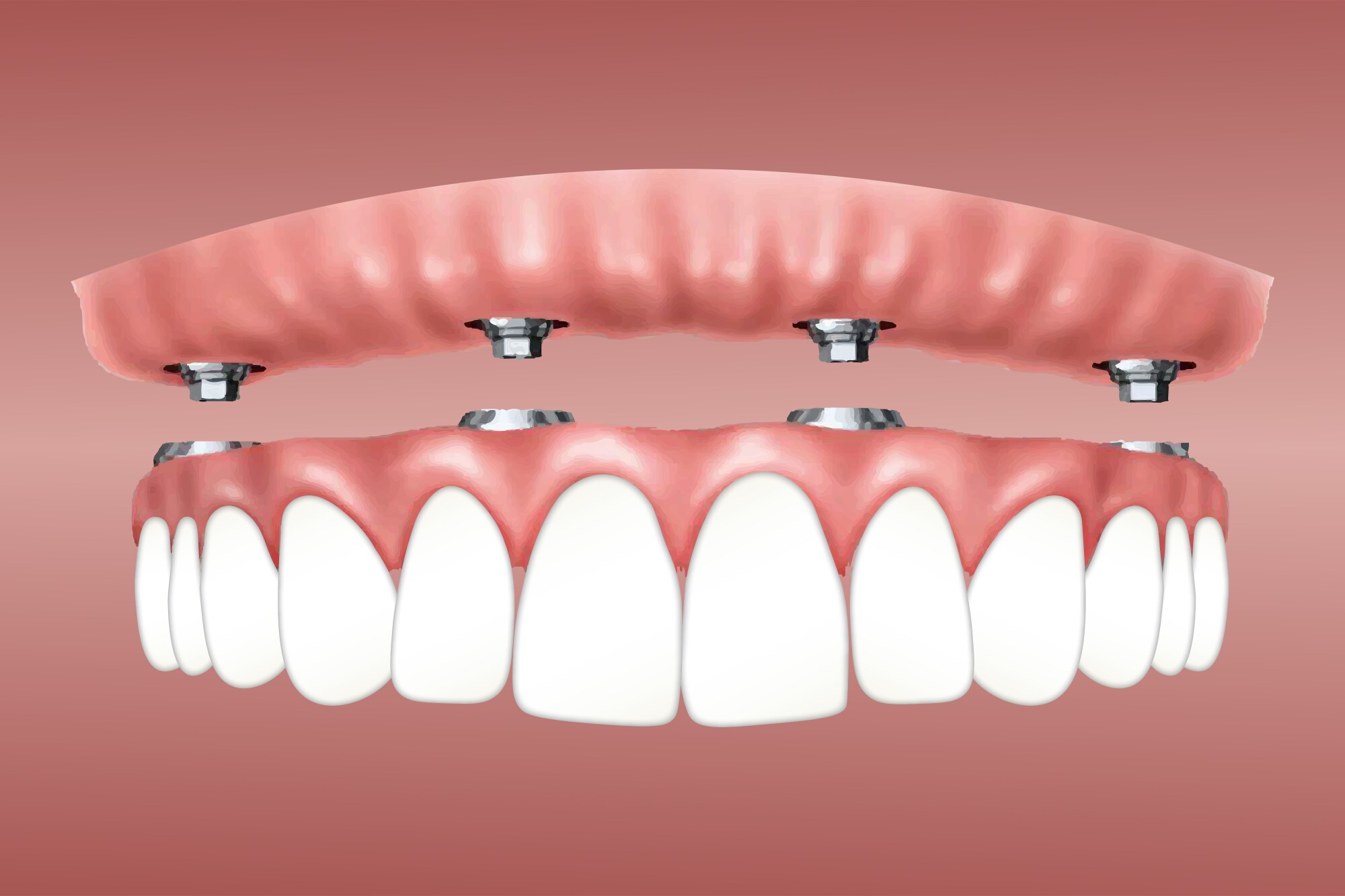The Greatest Guide To Dental Sense
The Greatest Guide To Dental Sense
Blog Article
The 8-Minute Rule for Dental Sense
Table of ContentsThe Definitive Guide for Dental SenseThe 2-Minute Rule for Dental SenseThe Only Guide for Dental SenseRumored Buzz on Dental Sense
are medical tools surgically implanted into the jaw to recover an individual's capacity to chew or their look. They provide support for fabricated (phony) teeth, such as crowns, bridges, or dentures. When a tooth is shed due to injury or condition, an individual can experience difficulties such as quick bone loss, defective speech, or adjustments to chewing patterns that cause discomfort.Dental implant systems include a dental implant body and oral implant joint and might also consist of a joint fixation screw. Dental veneers cost. The oral implant body is operatively inserted in the jawbone in location of the tooth's root. The oral implant joint is generally connected to the dental implant body by the joint fixation screw and extends via gum tissues into the mouth to support the attached fabricated teeth
(https://dental-sense.webflow.io/)Structure of The Oral Implant System selecting dental implants, talk with your oral copyright concerning the prospective advantages and risks, and whether you are a candidate for the procedure. Points to take into consideration: Your overall health is a vital consider establishing whether you are an excellent candidate for dental implants, the length of time it will certainly take to recover, and how much time the dental implant may stay in area.
Cigarette smoking may impact the healing procedure and lower the lasting success of the implant. The healing procedure for the dental implant body may take several months or longer, during which time you generally have a short-lived abutment in place of the tooth. the dental implant procedure: Meticulously follow the oral hygiene instructions provided to you by your dental service provider.
Dental Sense for Dummies
Implant failure can result in the demand for another procedure to repair or change the dental implant system. Brings back the capacity to eat Brings back cosmetic appearance Aids keep the jawbone from diminishing as a result of bone loss Preserves the health and wellness of the surrounding bone and periodontals Aids keep surrounding (close-by) teeth steady Enhances lifestyle Damages to bordering all-natural teeth throughout dental implant placement Injury to the surrounding cells throughout surgical treatment, such as sinus opening Injury throughout surgical procedure (for example, fracture of bordering jawbone) Insufficient feature, such as seeming like the teeth do not bite together typically A feeling that the tooth hangs or turning in location arising from an abutment screw loosening Implant body failing (looseness of the dental implant body) because of systemic infection, which might be most likely in people with unrestrained diabetes because of local infection in bone and periodontals supporting the implant body because of postponed recovery, which may be more probable in people that smoke Problem cleaning up the periodontals around the implant, resulting in poor oral health Without treatment gum disease Post-surgical tingling because of nerve impingement or damages Constantly alert healthcare service providers and imaging technicians that you have dental implants prior to any magnetic resonance imaging (MRI) or x-ray treatments.
FDA is not familiar with any type of unfavorable occasions reported for MRI or x-ray procedures with dental implants. Dental implants systems are normally made from products that follow worldwide agreement criteria of the International Organization for Standardization (ISO) or ASTM International. These criteria have details of what makes a risk-free material.

An oral implant is a structure that changes a missing out on tooth. With screw-like tools, the cosmetic surgeon inserts an implant right into the jawbone, and it acts as a support for an artificial tooth, called a crown.
The 4-Minute Rule for Dental Sense
Some people are not qualified for dental implant surgical treatment. It is for dental cosmetic surgeons to run on individuals with: intense illnessuncontrollable metabolic diseasebone or soft tissue illness or infectionIf these issues are fixed, an individual can have the surgical procedure. In, oral surgeons avoid operating on individuals with: If people with any of the above undertake oral implant surgical procedure, there is a higher threat of the dental implant failing.

Dental implant surgery is a personalized process. It's not the exact same for everyone. The adhering to offers a basic summary of what you can anticipate your dental professional, oral specialist, periodontist or prosthodontist to do: Place the implant surgically. Give you time to recover. Affix the message and last crown, bridge or denture.
Next off, your specialist will thoroughly place the dental implant right into your jaw. Ultimately, your specialist will certainly rearrange your gums and shut the incision with stitches. If your dental implant is near the front of your mouth, your dental expert will certainly make a temporary tooth for you to use until you heal. By doing this, you will not have a gap in your smile while you recoup.
Everything about Dental Sense
Throughout the recovery stage, your jawbone needs to fuse to the dental implant. This procedure can take anywhere from 3 to 9 months.
When your implant heals, your dental professional can connect the joint (small port message) and your last repair (crown, bridge or denture). This usually takes about one hour to finish and may require a 2nd minor surgical treatment. You shouldn't feel any type of discomfort during your oral implant procedure since your service provider will certainly utilize medicine to numb your periodontals.
Report this page